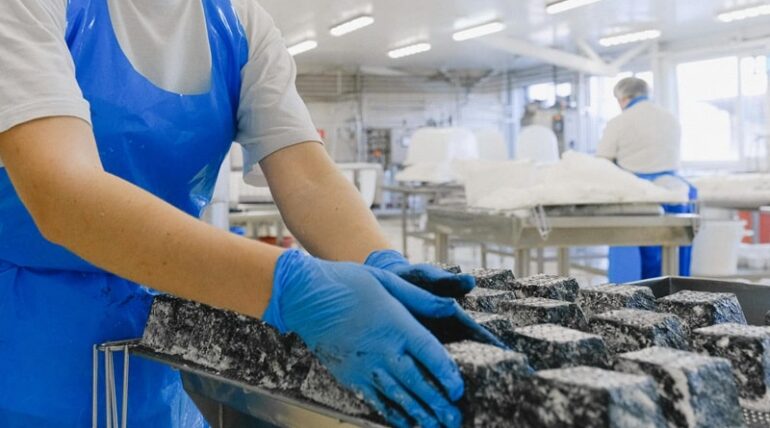From the farm to our forks to the landfill – do we really know how much food is being wasted?
Unfortunately, there’s much more food waste in the supply chain than most of us realize, with waste occurring every step of the way: through production, processing, distribution, retail, and consumption.
In the United States, 30-40% of food is wasted, making it the largest category of material placed in municipal landfills. Since food is being wasted at all levels of the supply chain, we must ask ourselves: What can we do differently?
This article covers the different stages of the supply chain, what causes food waste at each stage, and tackling waste in the global food supply chain.
Key Takeaways
- Food waste occurs at every stage of the supply chain, including production, processing, distribution, retail, and consumption.
- Global food waste on farms amounts to 15.3% of the food produced around the world, due to problems with infrastructure and technology, poor farming techniques, and the fact that some crops never make it to the market due to low demand or prices.
- Packaging and defective products are a big contributor to waste during processing, with many products discarded because they don’t meet quality standards.
- Transportation and storage create food waste at the distribution stage and may be caused by improper temperature control, humidity levels, poor shelving, poor pest control, improper inventory management, and damaged packaging.
- At the retail level, food waste is generated due to problems in storage, expiration dates, and inefficient inventory and stock management.
- 43% of food waste occurs at the consumption level, which is due to purchasing in bulk, misunderstandings with expiration dates, and improper storage techniques.
Stages of Supply Chain & Food Waste
By acknowledging how each level of the supply chain contributes to the crisis, we can keep some of America’s most wasted foods out of landfills.
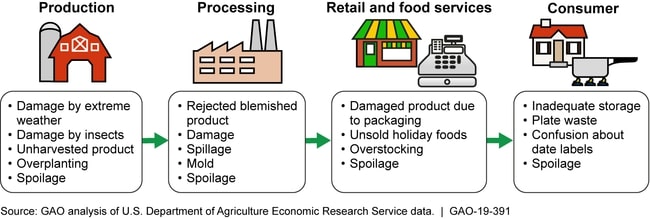
Let’s take a look at how production, processing, distribution, retail, and consumption all play a role.
Production/Manufacturing
Many people are quick to blame consumers for food waste (which we’ll get to below), but waste begins far before it reaches buyers. Global food waste on farms amounts to 15.3% of the food produced globally, which translates to 1.2 billion tons per year. But why is so much waste generated on farms?
One issue is that some crops never even make it to the market due to prices being too low. With little profit to be made, many farmers don’t see the value of harvesting them or don’t have the resources to justify the labor, leaving fruits and vegetables to rot in the field. Another reason is that farmers often have trouble finding buyers for their produce towards the end of their harvest. Since fruits and vegetables ripen at different times throughout the world, many buyers prefer to purchase produce from farmers who have better-quality produce that is in season.
Another contributor to waste is that not all farmers have access to proper infrastructure and technology. This causes problems such as inadequate storage for harvested produce, poor harvesting technology, and a lack of temperature management.
To address such problems, effective farm waste management techniques must be implemented. Many eco-friendly strategies can be explored, such as crop residue management or proper agricultural waste solutions. These management techniques work to reduce the amount of waste produced on farms and help dispose of waste in an eco-friendly way.
Processing
The processing stage involves various activities related to the transformation and management of goods. This often includes the sorting, cutting, and packaging of food products.
Fruit and vegetable waste includes items removed from fruits and vegetables during cleaning, processing, cooking, and/or packaging. These trimmings are done for both aesthetic and safety reasons and may include leaves, peels, pomace, skins, rinds, cores, pits, pulp, stems, seeds, twigs, and spoiled fruits and vegetables.
Defective products are also a huge contributor. While some products must be discarded due to potentially harmful effects, others are wasted because they don’t meet quality standards. This can be as simple as an apple having a small blemish or a carrot having a shape that isn’t “standard.”
Packaging has also proven to be a large obstacle in processing, as the choice of packaging can be a make-or-break for extending a product’s shelf life. Proper packaging design and materials and proper handling of such materials can reduce waste at the production and distribution levels. Some companies also opt for sustainable packaging alternatives, such as edible packaging, to help reduce waste.
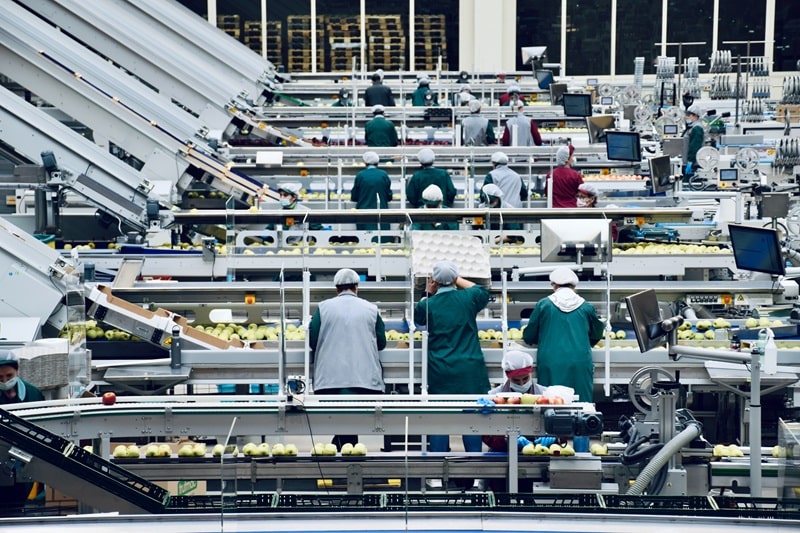
Distribution
Food waste at the distribution level often takes place during transportation and storage. Problems that may arise in these two areas include improper temperature control, humidity levels, poor shelving, poor pest control, improper inventory management, and damaged packaging.
A combination of better packaging, improved logistics, and more advanced technology can address most of these concerns.
Retail
Food waste at the retail level, which includes grocery stores and supermarkets, is due to problems in storage, expiration dates, and inefficient inventory and stock management.
One of the main issues with supermarket food waste is overstocking. To attract customers, many stores fill their baskets and shelves to the brim, leading customers to choose the most aesthetic and recent products. But what does this mean for food waste?
It means that products that have been on the shelves for longer and have a closer expiration date are often thrown out. This goes hand-in-hand with poor demand forecasting, leading to overproduction and food spoilage.
Consumption
The consumption stage includes both restaurants and households. Household food waste, which makes up 43% of food waste, is often due to the misinterpretation of expiration dates, over-purchasing of products, improper storage, and a lack of awareness and education regarding food waste.
Food waste in restaurants, on the other hand, generates approximately 22 to 33 billion pounds of food waste in the United States, creating a huge financial and environmental impact. In both restaurants and households, a lot of uneaten food is left on the plate, making over-serving a contributing factor to food waste.
What causes food waste in each stage?
Food waste along the supply chain happens for a variety of reasons, as discussed above. But what are the hidden reasons behind these acts?
Some waste is unintentional, while others are due to bad habits throughout every stage of the supply chain. Let’s explore this topic in more detail.
Production/Manufacturing
There are some inevitable reasons for food spoilage at the farm level, such as pests, extreme weather conditions, droughts, frosts, and natural disasters.
Aside from natural contributors to this crisis, outdated practices and imperfect harvesting techniques are two of the contributors to food waste at the production level. For instance, if crops are harvested too early or late, they may not be fit for consumption. Or if farmers spray chemical treatments to address the pest problem mentioned above, improper application can lead to crop loss. While these things are often unintentional, they lead to significant food waste in the supply chain.

Issues with supply chain coordination are also at fault, where mismatches between production and demand lead to excess produce being discarded. This happens when crops are overproduced due to market trends or contractual agreements.
Processing
One of the reasons why processing facilities produce so much waste is due to outdated or inadequate equipment. Outdated technology is less efficient, meaning longer processing times and delays in processing perishable foods. They’re also not as accurate when it comes to controlling temperature, moisture levels, and ingredient proportions, leading to excess waste. Equipment malfunctions, which often occur in older machines, can also result in significant product loss.
And since this is the stage in which sorting, washing, cutting, and packaging occur, the unfortunate reality is that a lot of food waste is produced by the mishandling of products. Improper handling can include anything from cutting products wrong to being careless during handling to not storing them properly.
There are also very strict quality standards in place in the food industry, which include criteria over size, color, and shape of products. Remember the apple and carrot example we gave above?
This is applied to most, if not all, products. The products that don’t meet these standards, even if they are still perfectly healthy, are often discarded.
Distribution
We’ve discussed some of the causes of food waste during distribution, but let’s dive deeper into how this looks in the real world.
Let’s say a truck is transporting a load of food, whether chicken, dairy, or produce. If this truck does not have proper control over the temperature, it can lead to microbial growth, the formation of mycotoxins, spoilage, and the deterioration of products. Now let’s say that they do have the right temperature, but the food is exposed to high levels of humidity, leading to the growth of bacteria, yeast, or mold.
In an alternative situation, this same truck has complete control over the temperature and humidity, but experiences delay due to logistical errors or external factors. While the environment inside the truck may be right, perishable items need to reach their destination and get off the shelves in a short amount of time. Delaying this process could mean that these items go bad before they reach customers.
All these scenarios play into the problem of food waste in the supply chain, which is heavily connected to supply chain coordination. Without proper planning, an excess of food is distributed without buyers purchasing it.
Retail
When it comes to retail, marketing strategies and consumer expectations are the big drivers behind waste. Trying to keep up with strict cosmetic standards is a vicious cycle, as foods that don’t meet certain criteria are often rejected by retailers and consumers.
Overstocking is another tactic retailers use to retain customers. This is because customers have been programmed to think that the best stores are the ones with the most choices—once again, a problem on both the retail and consumer sides. However, when excess food items are not sold within their shelf life, they risk becoming unsellable, leading to waste.
Many retailers also struggle to predict consumer preferences and purchasing patterns accurately, leading to improper inventory management. If forecasts overestimate demand, retailers order more food items than necessary, leading to a surplus that eventually goes to waste. Having proper inventory is especially critical with food items that have a short shelf life, such as fresh produce or dairy.
Consumption
43% of food waste in the food supply chain comes from our households, but how?
Retail and consumption waste are very connected, as retailers have set certain expectations for their quality, and consumers now expect the newest and best products. A common consumer behavior is buying products in bulk and not having the capacity to eat them before they expire, which is yet another reason why overproduction occurs at the retail level.
There’s also an overall lack of knowledge on proper food storage and preparation. Improper storage, such as leaving items unsealed and keeping things at the wrong temperature, is a huge contributor to spoilage. In fact, many products can be eaten long after their “use by” date, but consumers’ lack of awareness and improper storage techniques mean they end up in the trash.
This confusion is due to the lack of federal regulations regarding food waste caused by expiration dates. Manufacturers’ ability to create their own guidelines for expiration dates, along with buyers’ misinformation on how to read them, leads to the premature discarding of food.
Strategies to Mitigate Food Waste in Each Stage
How to reduce food waste in the supply chain?
The key to reducing food waste in the supply chain is cooperation at every stage. Waste management companies help by offering solutions that are environmentally friendly. At Shapiro, we offer services including the collection, transportation, treatment, and recycling of food waste.
To see how every level of the supply chain can contribute, keep reading.
Production/Manufacturing
There are multiple ways to reduce food waste during manufacturing. One of the sustainable options that producers can implement is to choose crop varieties that resist pests and can survive in local weather conditions. These improved crop varieties contribute to minimizing crop failure and reducing the need for excessive pesticide and fertilizer use.
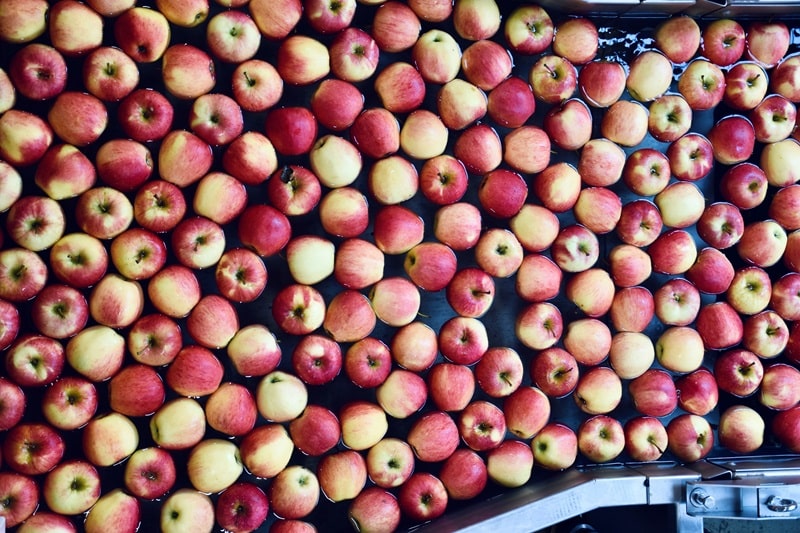
There are also several sustainable farming techniques that can reduce waste. Crop rotation, for instance, is the practice of planting different crops sequentially on the same plot of land to improve soil health, optimize nutrients in the soil, and combat pest and weed pressure. Organic farming is another strategy that emphasizes natural methods to maintain soil health and reduce environmental impact.
Precision farming technology, a concept based on observing, measuring, and responding to crop states at multiple growth levels, can also be explored. This method considers aspects such as soil type, terrain, weather, plant growth, and yield type to ensure crops are in optimal health. These techniques, which include GPS and satellite imagery, optimize planting, watering, and harvesting, therefore helping farmers have more control over their harvest and reducing overproduction.
And lastly, improved market forecasting and communication between farmers and buyers reduces food waste in the food supply chain and ensures that food is harvested and distributed according to market demand.
Processing
With outdated technology acting as a driving factor for waste at the processing level, new and advanced technological solutions should be considered. Automation and AI, for instance, enhance efficiency and reduce waste, helping to streamline the entire process, from sorting and grading to packaging and labeling.
Technology can also assist in creating more efficient food processing methods. AI-powered technology can help detect defects in products, sort products based on quality, and even adjust variables like cooking time, temperature, and ingredient proportions.
To make the whole operation more environmentally friendly, there are waste reduction practices that can be implemented. This includes the use of energy-efficient equipment, improved disposal of unavoidable waste, enhanced packaging, and even the recycling of water.
To avoid the elimination of healthy food due to aesthetics, there should be a standardization of quality criteria. This reduces the rejection of edible and safe food based on aesthetic preferences, a huge contributor to the food waste crisis. This, along with the training of staff to properly implement such changes, can help reduce the waste associated with processing.
Distribution
Another way that technology can be utilized is during distribution. Algorithms and data analytics help companies reduce transit time, minimize fuel consumption, and reduce spoilage. Real-time tracking systems also observe food conditions during transit, monitoring factors like temperature and humidity. These systems notify companies of changes in food conditions, allowing them to address the issue before food spoilage occurs.
Advanced storage solutions can also be implemented to prolong the shelf life of perishable foods. This includes temperature-controlled warehouses and vehicles. While this may be a big upfront cost for distribution companies, reducing waste is beneficial for the environment and their pockets in the long run.
Retail
One of the ways to handle waste at the retail level is through inventory management systems that use real-time data and predictive analytics. This helps retailers make informed decisions about restocking, inventory, and order fulfillment to accurately match supply with customer demand.

To address the issue of customers expecting the freshest and most aesthetic products, retailers can offer discounts for products that are about to expire or that have blemishes. This not only reduces waste but also makes produce accessible to a larger audience.
Consumption
At the consumer level, there are many ways that we can all reduce waste in our own homes. Part of the challenge is the misunderstanding of food labels. By understanding how to read expiration dates, consumers can avoid throwing away foods that can still be consumed long after their label. Consumers should also prioritize the proper storage of products to extend their shelf life.
There are also many habits that consumers can implement in their everyday grocery shopping routine. Instead of buying in bulk or without a clear plan, meal planning and making detailed shopping lists can help consumers only purchase what they are going to use.
Controlling portion size is another way to avoid having leftover food that is discarded. When there are leftovers, whether from cooked meals or raw ingredients, consumers should create the habit of utilizing them in new recipes rather than throwing them away.
What percent of the food supply is wasted in the supply chain?
Food waste statistics show us that 28% of the world’s total agricultural area is used to produce food that is lost or wasted. This means that an area equivalent to the combined size of the US, India, and Egypt is used to grow food that is never consumed.
Food waste along the supply chain occurs at different stages, with each country having varying levels of waste at each stage. In general, developed countries have more waste at the consumer level than developing countries, whose waste typically occurs during production and handling. So, what percent of the U.S. food supply is wasted?
Every day in the United States, about a pound of food is wasted per person. The total amount of food waste in the U.S. is estimated to be close to 60 million tons per year, which translates to $165 billion worth of food wasted.
As shown in the graph below, 61% of waste occurs at the consumer level in North America and Oceania.
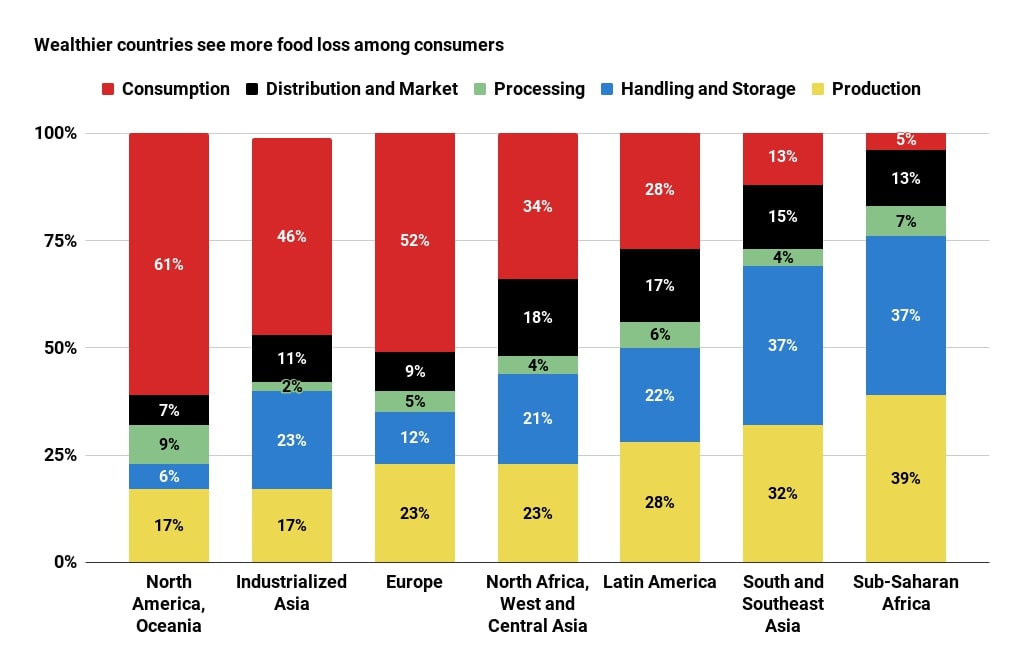
According to the Food Sustainability Index, the United States had the largest amount of food waste per person, with an estimated 210 pounds per person per year of food waste. Although consumers create a large portion of food waste, almost 40% of the waste occurs at other stages of the supply chain, as shown in the graph above.
Conclusion
Food loss and waste in the food supply chain are occurring at every stage due to problems with technology, supply chain coordination, and a lack of knowledge about proper handling, storage, and consumer behavior.
To address this problem, proper food waste management should be implemented to prevent food waste from occurring and provide sustainable disposal of necessary waste. At Shapiro, we provide waste logistics, transparent waste tracking workflows, and a comprehensive range of organic waste management services. Contact us today to discuss innovative solutions to help you and your company reduce food supply chain waste.
Baily Ramsey, an accomplished marketing specialist, brings a unique blend of anthropological insight and marketing finesse to the digital landscape. Specializing in educational content creation, she creates content for various industries, with a particular interest in environmental initiatives.
